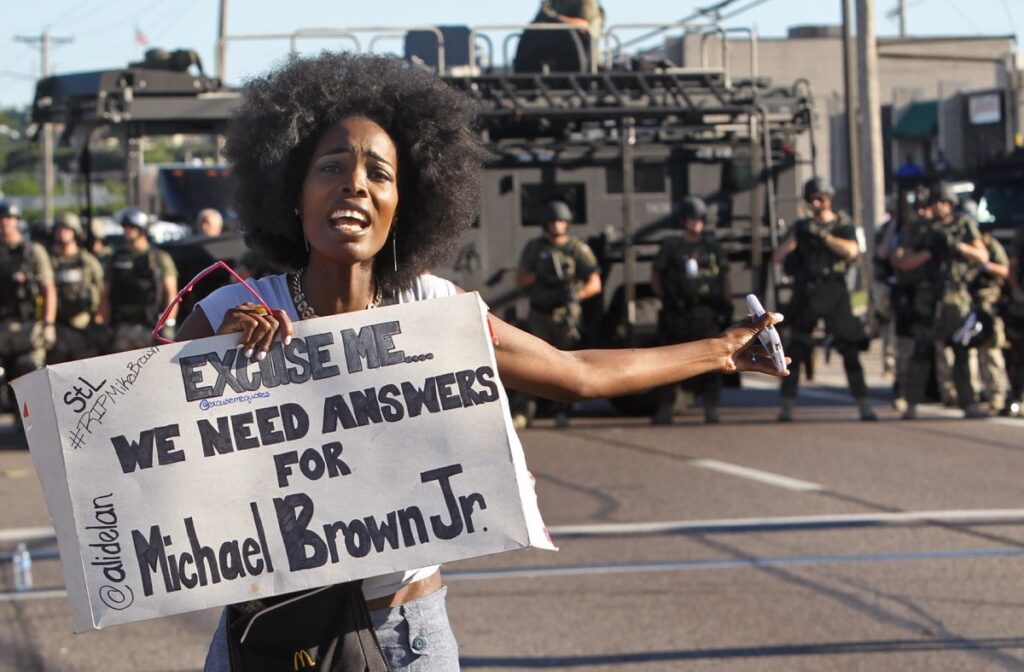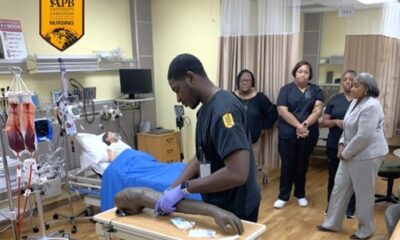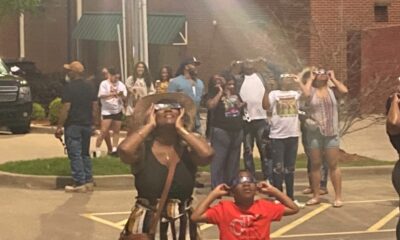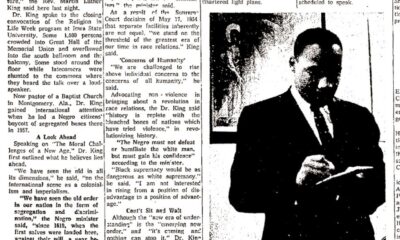Featured
How The 2014 Police Killing of Michael Brown Changed Black America

Eight years ago, the police shooting of Mike Brown in Ferguson, Missouri, started a conversation about racial justice in America that is still ongoing. The summer day Darren Wilson, a white officer, gunned down the unarmed and recent high school graduate marked a new phase in America’s reckoning with police brutality. Brown lay on the pavement in the hot sun for hours while the news of the fatal shooting spread around the nation and sparked months of protests not seen since the 1960s.
“To see Michael laying there for four-and-a-half hours was not only traumatizing to our family, but to all those young faces and those young babies,” Brown’s mother, Lezley McSpadden-Head, told the Washington Post in 2021.
McSpadden-Head’s foundation, Michael O.D. Brown We Love Our Sons & Daughters Foundation, partnered with Normandy High School, Brown’s alma mater, to teach students about social justice.
She added, “I didn’t want [students] to think their life is supposed to be that way for them by 18, or even 25. We don’t want our youth to have a low expectation of life. We don’t want them to devalue their lives, because they feel like, ‘Well, I’m 18 it’s over for me.’”
McSpadden-Head and Michael Brown, Sr. along with other parents whose sons and daughters were killed by police have created foundations to honor their children. And most of them have also devoted their lives to talking about the need for change, leading the effort to ensure police accountability.

By August 2014 when Brown, 18, was killed by a police officer, word of Eric Garner – another unarmed Black man killed by police – was also spreading around the country. Garner was selling untaxed cigarettes on Staten Island when a white police officer used a chokehold to restrain him. Garner’s death was ruled a homicide, and using chokeholds also violated New York Police Department policy.
In November 2014, a police officer in Cleveland, Ohio, killed Tamir Rice. Rice was a 12-year-old playing in a park with a toy gun when Timothy Loehmann shot him immediately after arriving on the scene. No charges were filed. Five months later, Freddie Gray was arrested by Baltimore police for legal possession of a knife. Gray died while being transported in a police van to the hospital. Philando Castile’s girlfriend livestreamed the aftermath of the police shooting that claimed his life in a Minneapolis suburb in July 2016. The officer shot Castile during a traffic stop.
The succession of killings of unarmed Black men by white police officers galvanized the public and sparked protests around the country. The newly formed social justice group, Black Lives Matter, moved to the forefront of the national calls for action. BLM had formed after the killing of Trayvon Martin by a neighborhood watchman in Florida in 2012.
Civil Rights attorney Ben Crump became a household name after the Martin case and millions of Americans – Black and white – became more aware of police brutality. Black Americans were already familiar with the mistreatment. But when George Floyd was murdered by a Minneapolis police officer in 2020 and a bystander videotaped the officer pressing his knee into a handcuffed Floyd’s neck for more than nine minutes, the entire world saw what Black America had experienced for generations and within the last decade had begun to speak out publicly and consistently, and it started on an August day in 2014 when a teenager with plans to attend a technical school in the fall was shot and killed in his neighborhood by a police officer.

-

 Black History5 months ago
Black History5 months agoThe untold story of a Black woman who founded an Alabama hospital during Jim Crow
-

 Featured9 months ago
Featured9 months ago‘No Closure’ In Town Where Five Black Residents Were Either Murdered, Died Suspiciously Or Are Missing
-

 Black History9 months ago
Black History9 months agoBlack History Lost and Found: New Research Pieces Together the Life of Prominent Texas Surgeon and Activist
-

 Featured9 months ago
Featured9 months agoFounder of “The Folding Chair” Podcast Calls Montgomery’s Brawl ‘Karma’
-

 Featured8 months ago
Featured8 months agoThousands ‘Live Their Dream’ During National Black Business Month
-

 Featured10 months ago
Featured10 months agoJuneteenth And ‘246 Years Of Free Labor’ Are Key To Conversations About Reparations









